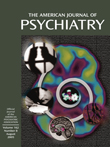Antidepressants for Bipolar Depression
To the Editor: The conclusion of a recently published review and meta-analysis by Dr. Gijsman et al. of antidepressant treatment of bipolar depression is “at odds” (according to the review) with the recommendation of the APA Practice Guideline for the Treatment of Patients With Bipolar Disorder (1) to use lithium or lamotrigine as a first-line treatment for bipolar depression. Instead, the review recommends a combination of a mood stabilizer and an antidepressant.
The APA practice guideline was developed in 2001 and published in April 2002. Every effort was made to ensure that the guideline’s recommendations were based on evidence available at the time. The recommendation for lithium or lamotrigine was based on the positive results of controlled monotherapy trials of these agents in the treatment of bipolar I depression. In 2001, the controlled data on antidepressants in combination with a mood stabilizer did not support efficacy for bipolar depression. A positive fluoxetine-olanzapine study (2) had not been completed, and no statistically significant difference in efficacy was observed in the placebo-controlled study of paroxetine and a mood stabilizer (3).
A second noted difference between the review by Dr. Gijsman et al. and the APA guideline regards the recommendation to select specific antidepressants as part of combination therapy. The APA guideline recommended the use of agents for which there were controlled data and for which low rates of switching had been found.
Since the guideline’s publication in April 2002, a substantial amount of controlled research has emerged on the treatment of bipolar disorder, including the acute treatment of depression, the acute treatment of mania, and maintenance and prophylaxis. APA practice guidelines are revised at regular intervals, about every 5 years, depending on available resources. Between revisions, in an effort to keep recommendations current and useful, the project now publishes “guideline watches.” Watches briefly describe major developments in the scientific literature that could lead clinicians to treat patients in a manner different from what the guidelines recommend. They are published online at http://www.psych.org/psych_pract/treatg/pg/prac_guide.cfm. We look forward to updating the bipolar disorder guideline in the near future.
1. American Psychiatric Association: Practice Guideline for the Treatment of Patients With Bipolar Disorder (Revision). Am J Psychiatry 2002; 159(April suppl)Google Scholar
2. Tohen M, Vieta E, Calabrese J, Ketter TA, Sachs G, Bowden C, Mitchell PB, Centorrino F, Risser R, Baker RW, Evans AR, Beymer K, Dube S, Tollefson GD, Breier A: Efficacy of olanzapine and olanzapine-fluoxetine combination in the treatment of bipolar I depression. Arch Gen Psychiatry 2003; 60:1079–1088; correction, 2004; 61:176Google Scholar
3. Nemeroff CB, Evans DL, Gyulai L, Sachs GS, Bowden CL, Gergel IP, Oakes R, Pitts CD: Double-blind, placebo-controlled comparison of imipramine and paroxetine in the treatment of bipolar depression. Am J Psychiatry 2001; 158:906–912Link, Google Scholar



